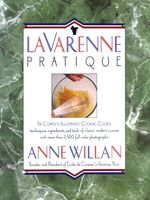Save 25% on ckbk Premium Membership with code FALLFLAVORS 🍁
Yeastless Breads
By Anne Willan
Published 1989
Yeast doughs are only half of the bread picture. A wide variety of breads, called “quick breads” in the United States, are leavened with chemical raising agents such as baking powder or baking soda, and sometimes a combination of baking powder and soda. In contrast to yeast breads, which should have the even, chewy texture produced by kneading, quick breads are soft and crumbly, particularly when the bread is sweet. As soon as liquid is added to the dough, chemical raising agents start to release carbon dioxide, so mixing must be completed within 10 minutes. Always stir gently to avoid dissipating the gas and developing the gluten in the flour. The finished dough should be soft and sticky, even pourable in some cases, with a rough appearance. Once in the oven, the carbon dioxide is released rapidly, and the dough doubles in volume before it has time to cook and set. Note Electric machines overwork the dough and are a drawback when making quick breads.
Become a Premium Member to access this page
Unlimited, ad-free access to hundreds of the world’s best cookbooks
Over 160,000 recipes with thousands more added every month
Recommended by leading chefs and food writers
Powerful search filters to match your tastes
Create collections and add reviews or private notes to any recipe
Swipe to browse each cookbook from cover-to-cover
Manage your subscription via the My Membership page
In this section
Part of
Advertisement
Advertisement


